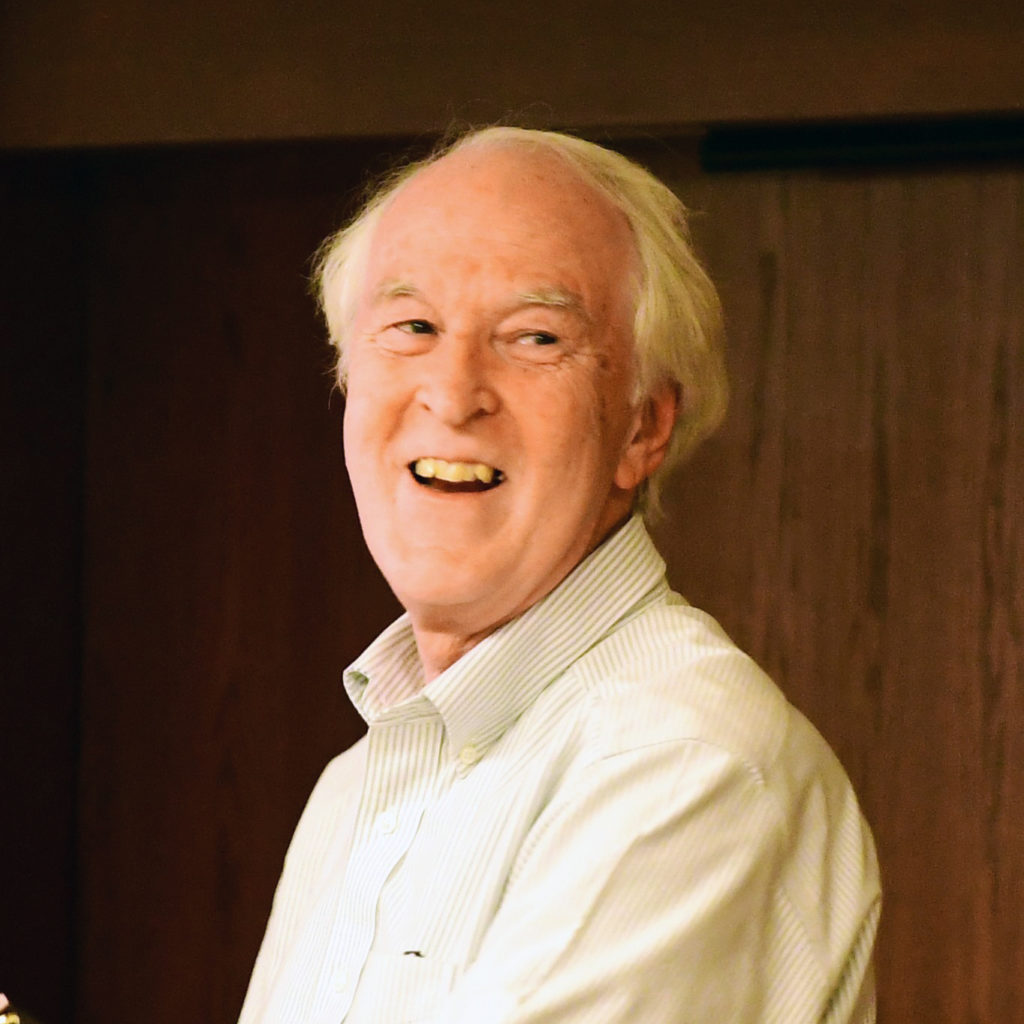Sight + Sound, Spring 2020
by Lawton Snyder
The Eye & Ear Foundation family was very saddened by the recent loss of Jim Funderburgh, PhD one of the Department of Ophthalmology’s most accomplished scientists. I have had the pleasure of working with Jim for the past ten years. Jim’s research provided the Eye & Ear Foundation with one of our greatest accomplishments and sources of pride when the first patient in India received the stem cell therapy, which has now restored sight (in a clinical trial) for patients who lost vision due to corneal opacities. I am always very appreciative that our Foundation had a pivotal role at this moment, and Jim acknowledged this frequently. These are memories I will always cherish along with the joyful nature Jim brought with him when he walked into the building after riding his bike to Oakland each day.
Jim was a Professor of Ophthalmology at the University of Pittsburgh School of Medicine. Working with his wife Martha as a research partner and best friend, he specialized in research on corneal scarring and pioneered the use of stem cells to clear scarred corneas, first in mice and ultimately in humans with colleagues in India. His innovative achievements were recognized by Research to Prevent Blindness, and the continuing project for corneal regeneration will now bear his name. Jim generously shared his knowledge with colleagues, post-docs, and students – undergrad, graduate, and medical – many of whom have gone on to successful careers.
Jim, along with his team in the Department of Ophthalmology, studied the biological processes involved in corneal wound healing, the identification of corneal stromal stem cells (CSSC), and, more recently, the translational use of CSSC on preventing corneal scarring after injury. The Funderburgh method of clearing corneal scarring was first performed on patients in India, where over 80 patients with acute and chronic corneal opacities participated in a clinical trial. In this trial, approximately 90% of patients saw significant regression of scarring and improvement of vision.
Because of the huge potential that this method has to cure corneal blindness in humans, the Department Ophthalmology has formed a Cornea Taskforce and established the Funderburgh Corneal Regeneration Project, to aim for the clinical use of the new therapy to prevent and treat corneal scarring in the United States and worldwide. The Taskforce includes Martha Funderburgh, PhD, Yiqin Du, MD, PhD, with the help of clinician-scientists, Deepinder Dhaliwal, MD and Vishal Jhanji, MD. Rounding out the team and recruited by Dr. Funderburgh, is new faculty member, Gary Yam, PhD from Singapore, who also specializes in corneal stem cell work. Isabelle Billing, Phd was hired as a project manager to keep the project on target for FDA approval and clinical trials.
The Funderburgh Project is at a critical stage, needing support to move the stem cell therapy into trials in the United States and to begin working through the FDA processes toward the submission of an IND (Investigational New Drug) application. Providing a rapid non-surgical regenerative therapy for corneal scarring will not only reduce the need for invasive transplant surgery, with the costs and complications associated with it, but the added convenience and accessibility will revolutionize the treatment of corneal blindness.
